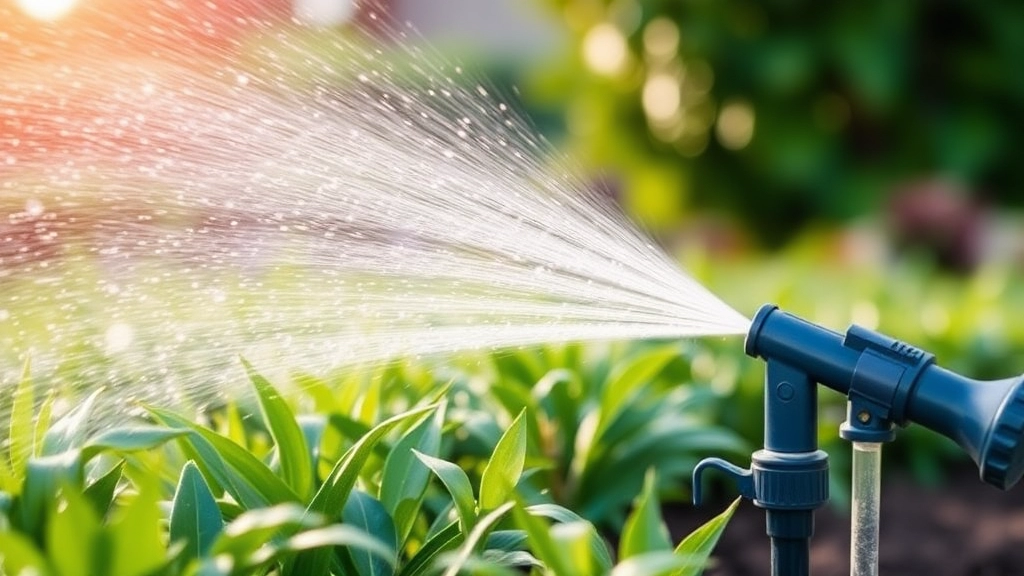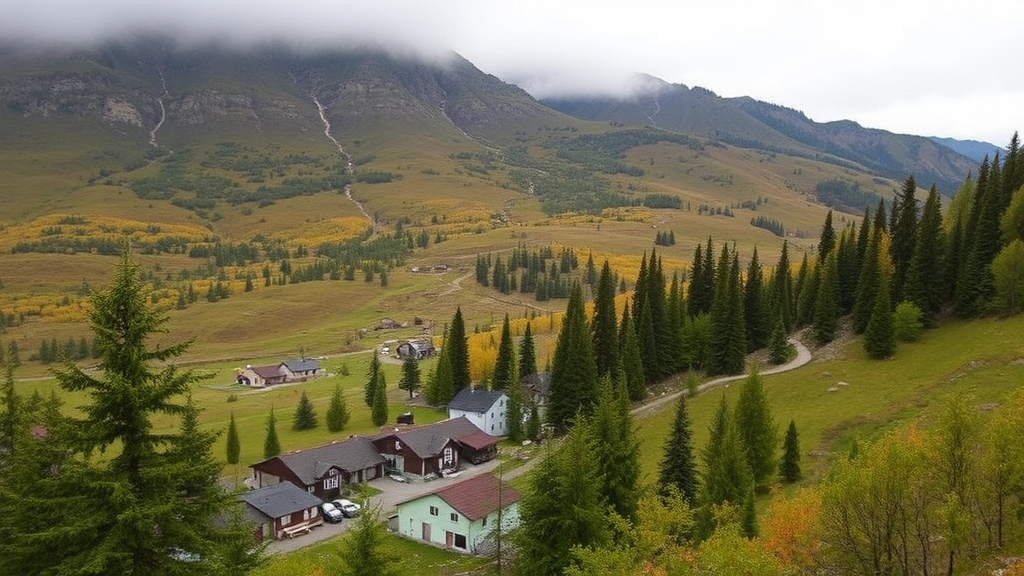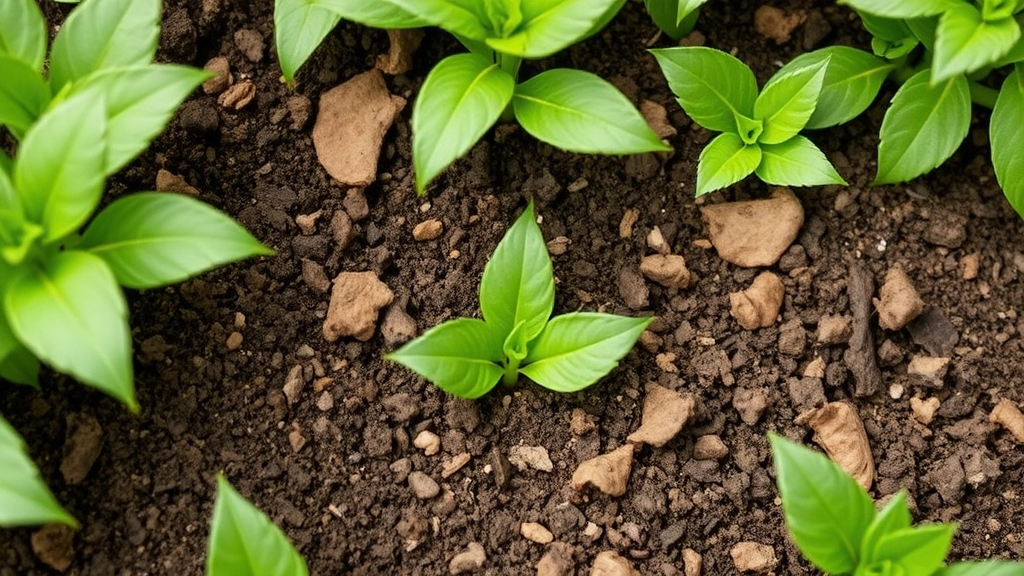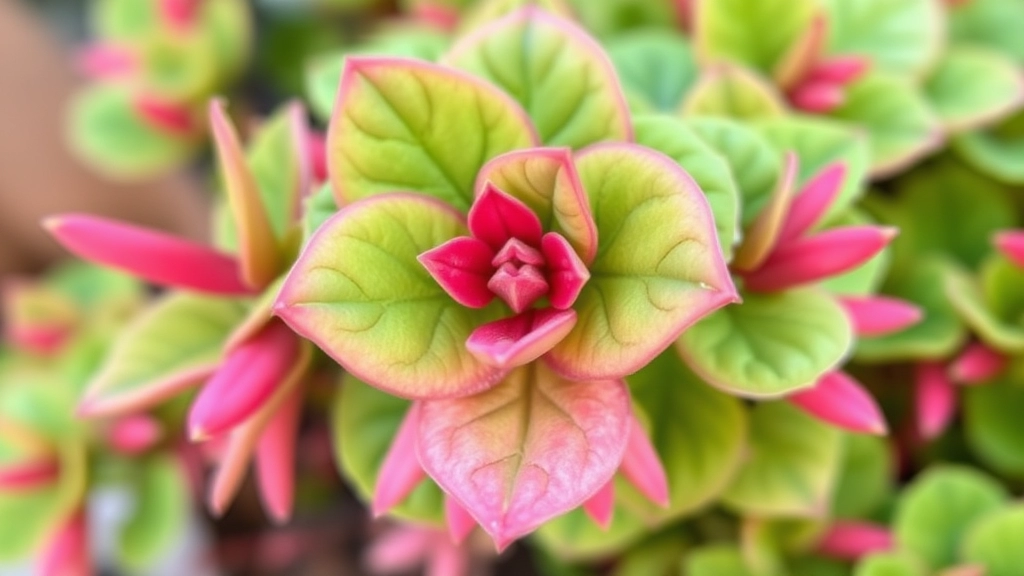Kalanchoe Care: Reviving Drooping Leaves
Noticing your Kalanchoe leaves drooping and wondering what’s going wrong? You’re not alone. Many plant enthusiasts face this issue, often due to improper watering, insufficient light, or even pest infestations. Let’s dive into the main causes and practical solutions to revive your plant’s health.
Main Causes of Drooping Leaves
- Improper Watering: Overwatering or underwatering can lead to drooping leaves.
- Insufficient Light: These plants thrive in bright, indirect sunlight.
- Pest Infestations: Keep an eye out for pests that might be stressing your plant.
- Temperature Fluctuations: Sudden changes in temperature can also affect your Kalanchoe.
Practical Solutions
First, ensure you’re watering your Kalanchoe correctly. Next, check the light conditions and adjust them if necessary. By adjusting these care routines, you can help your Kalanchoe bounce back and stay vibrant.
Causes of Kalanchoe Leaves Drooping
Have you ever noticed your Kalanchoe’s leaves drooping and wondered what might be causing this distress?
Understanding the reasons behind drooping leaves is essential for any plant enthusiast, especially when it comes to Kalanchoe, a popular succulent known for its vibrant blooms and hardy nature.
Here are some primary causes that might be affecting your plant:
- Overwatering: This is one of the most common culprits. Kalanchoe prefers dry conditions, and excess water can lead to root rot, causing leaves to droop. Always check the soil moisture before watering. For more detailed advice, check out our ultimate guide to caring for Kalanchoe succulents.
- Underwatering: Conversely, if the plant is thirsty, it will also show signs of distress. If the soil feels bone dry, it’s time for a drink.
- Insufficient Light: Kalanchoe thrives in bright, indirect sunlight. If your plant isn’t getting enough light, it might droop as it stretches towards the sun. Learn more about the proper lighting conditions in our Kalanchoe Mother of Thousands care guide.
- Extreme Temperatures: Sudden temperature changes or exposure to cold drafts can shock your plant, leading to drooping leaves.
- Pest Infestation: Pests such as mealybugs or aphids can sap the plant’s strength, resulting in drooping leaves.
- Nutrient Deficiencies: A lack of essential nutrients can weaken your Kalanchoe, making it more susceptible to drooping.
Importance of Proper Watering Practices

Ever looked at your Kalanchoe and thought, “Why are you drooping?” One of the main culprits behind those sad, droopy leaves often boils down to watering practices.
Getting the watering right is crucial. Too much water can drown your plant, while too little can leave it parched. Here’s what you should keep in mind:
- Check the Soil: Stick your finger about an inch into the soil. If it feels dry, it’s time to water. If it’s still moist, hold off for a bit.
- Watering Schedule: Kalanchoes thrive on a routine. Water them every 1-2 weeks, depending on the season. In winter, they need even less.
- Drainage Matters: Always use pots with drainage holes. This prevents water from pooling at the bottom, which can lead to root rot.
- Water Quality: Use room-temperature water. Cold water can shock the roots, making them less effective at absorbing nutrients.
- Observe the Leaves: If the leaves are wrinkled, it’s a sign your plant needs a drink. Conversely, if they’re mushy, you might be overdoing it.
By mastering these watering practices, you’ll give your Kalanchoe the best chance at bouncing back to health.
Ensuring Adequate Sunlight for Healthy Growth
Have you ever wondered why your Kalanchoe leaves are drooping despite your best care efforts? One often-overlooked factor is sunlight.
Kalanchoes thrive in bright, indirect sunlight. Insufficient light can lead to weak stems and drooping leaves. Here are some essential tips to ensure your plant receives the right amount of sunlight:
- Location Matters: Place your Kalanchoe near a south or west-facing window where it can soak up the light.
- Rotation is Key: Rotate the pot every few weeks to ensure all sides receive equal light exposure.
- Watch for Signs: If the leaves start to stretch towards the light source, it’s a sign they need more sunlight.
- Avoid Direct Sunlight: While they love light, too much direct sunlight can scorch the leaves. Aim for bright, indirect light.
A well-placed Kalanchoe will not only maintain its vibrant colour but also support overall health, reducing the risk of drooping leaves. For more detailed tips, check out our guide on fixing etiolated Kalanchoe Blossfeldiana. Additionally, discover the ultimate guide to growing and caring for succulent Kalanchoe plants to ensure your plants thrive.
Temperature Fluctuations and Their Impact

Have you noticed your Kalanchoe leaves drooping despite your best care efforts? One often overlooked factor could be temperature fluctuations.
Kalanchoe plants thrive in stable environments, and sudden changes in temperature can cause stress, leading to drooping leaves. Here are some key points to consider:
- Ideal Temperature Range: Kalanchoe prefers temperatures between 18°C and 24°C.
- Avoid Extremes: Exposure to temperatures below 10°C or above 30°C can shock the plant.
- Drafts and Heating: Be mindful of drafts from windows or heating vents, as these can cause rapid temperature changes.
For instance, I once placed a Kalanchoe near an open window during a chilly evening, and within days, the leaves began to droop. Once I moved it to a more stable environment, it perked right back up.
To ensure your Kalanchoe remains healthy, monitor its surroundings regularly.
Have you ever noticed your Kalanchoe leaves drooping despite following proper care routines? One possible culprit could be pests.
Kalanchoe plants, while generally hardy, are susceptible to a range of pests that can cause significant stress. Identifying these pests early is crucial for maintaining the health of your plant. Here are some common pests to watch out for:
– **Aphids**: Tiny green or black insects that cluster on new growth. They suck sap, leading to wilting and drooping leaves.
– **Mealybugs**: White, cottony masses found in leaf joints. They also feed on sap and can cause leaf drop.
– **Spider Mites**: Microscopic pests that create fine webbing. They thrive in dry conditions and can lead to yellowing leaves.
– **Scale Insects**: Small, brown bumps on stems and leaves. They can weaken the plant significantly.
Managing Pests
Once you’ve identified the pests, it’s time to act. Here are some effective management strategies:
1. **Physical Removal**: For small infestations, simply wipe pests off with a damp cloth.
2. **Insecticidal Soap**: This is a safe option for treating larger infestations. Spray directly on affected areas.
3. **Neem Oil**: A natural remedy that disrupts the life cycle of many pests. Apply it as a foliar spray.
4. **Regular Inspections**: Check your plants weekly to catch any pest issues early.
By keeping an eye on your Kalanchoe and taking proactive measures, you can prevent pests from causing drooping leaves. For more detailed information on caring for specific varieties, check out the [care guide for Kalanchoe tomentosa](https://planthq.org/kalanchoe-tomentosa-white-care-guide-tips-propagation/) and the [comprehensive guide to Kalanchoe species](https://planthq.org/comprehensive-kalanchoe-species-list-for-gardeners/).
Soil and Drainage Solutions for Reviving Drooping Leaves

So, you’ve noticed your Kalanchoe leaves drooping, and you’re probably wondering if it’s all about water or sunlight. Well, soil and drainage play a massive role too!
The Right Soil Mix
First off, let’s chat about soil. Kalanchoes thrive in well-draining soil. If your plant’s leaves are drooping, it might be a sign that the soil is too compact or retains too much moisture.
- Cactus Mix: A cactus or succulent mix is ideal because it allows for quick drainage.
- DIY Mix: You can also create your own by mixing regular potting soil with sand or perlite.
- Pro Tip: Aim for a 2:1 ratio of potting soil to sand/perlite. This combo keeps the roots happy and healthy.
Drainage Matters
Now, let’s not forget about drainage. Poor drainage can lead to root rot, which is a common issue with Kalanchoes.
- Pot Choice: Use pots with drainage holes. This simple step can save your plant.
- Layering: Consider adding a layer of small stones or gravel at the bottom of the pot before adding soil. This helps excess water escape quickly.
Reviving Drooping Leaves
If your Kalanchoe’s leaves are already drooping, here’s what you can do:
- Repot: If the soil is too dense or soggy, it might be time to repot your plant in fresh, well-draining soil.
- Check Roots: Gently remove the plant from its pot and inspect the roots. Trim any that look mushy or brown.
- Water Wisely: After repotting, give it a light watering. Too much water right away can stress the plant.
By ensuring your Kalanchoe has the right soil and drainage, you’ll be on your way to seeing those leaves perk up again.
Addressing Nutrient Deficiencies in Kalanchoe
As we delve deeper into the health of your Kalanchoe, it’s essential to consider nutrient deficiencies that might be causing those drooping leaves.
Common Nutrient Deficiencies
Kalanchoe plants, while hardy, can suffer from a lack of essential nutrients. Here are the most common deficiencies:
- Nitrogen: Essential for leaf growth, a lack of nitrogen can result in yellowing leaves.
- Phosphorus: Important for root development, insufficient phosphorus can lead to stunted growth and poor flowering.
- Potassium: Vital for overall plant health, a deficiency can cause weak stems and browning leaf edges.
Signs of Nutrient Deficiency
Recognising the signs early can save your plant from further decline. Look out for:
- Yellow leaves, especially older ones (nitrogen deficiency).
- Dark green leaves with poor flowering (phosphorus deficiency).
- Leaf edges turning brown or crispy (potassium deficiency).
Solutions for Nutrient Deficiencies
To rectify these deficiencies, consider the following steps:
- Fertilise Regularly: Use a balanced fertiliser specifically formulated for succulents.
- Organic Options: Compost or worm castings can provide slow-release nutrients.
- Soil Amendments: Incorporating nutrient-rich soil can help restore balance.
- Watering Practices: Ensure you’re not overwatering, as this can leach nutrients from the soil.
Monitoring and Adjusting
Keep an eye on your Kalanchoe after making these adjustments. A few weeks should show signs of improvement. For more detailed care tips, you can refer to our complete guide to growing Kalanchoe Mother of Thousands or explore the top Kalanchoe succulent varieties and care tips.
Best Practices for Preventing Future Drooping

So, you’ve tackled the causes of drooping Kalanchoe leaves, and now it’s time to focus on keeping your plant healthy and vibrant.
Here are some best practices to ensure your Kalanchoe stays perky:
- Water Wisely:
– Always check the soil moisture before watering.
– Water only when the top inch of soil feels dry.
– Use a pot with drainage holes to avoid waterlogging. - Light It Up:
– Place your Kalanchoe in a spot where it gets bright, indirect sunlight.
– Rotate the plant occasionally to ensure all sides get equal light exposure. - Temperature Control:
– Keep your plant in a stable environment, ideally between 15-25°C.
– Avoid placing it near drafts or heating vents. - Pest Patrol:
– Regularly inspect your plant for pests like mealybugs or aphids.
– If you spot any, treat them promptly with insecticidal soap or neem oil. - Soil Matters:
– Use well-draining soil specifically formulated for succulents.
– Consider repotting every couple of years to refresh the soil. - Feed Smart:
– During the growing season (spring and summer), use a balanced liquid fertiliser every month.
– Avoid over-fertilising; less is often more with Kalanchoe. - Routine Check-ups:
– Keep an eye on your plant’s overall health.
– If you notice any signs of stress, address them quickly.
Have you tried everything and your Kalanchoe leaves are still drooping? It can be frustrating when you’ve followed all the advice, yet your plant remains unwell. Let’s delve into some practical troubleshooting steps to help you identify and resolve persistent drooping issues.
### Assess Watering Habits
– **Check Soil Moisture**: Use your finger to test the soil a couple of inches down. If it feels dry, your plant may need water. Conversely, if it feels soggy, you might be overwatering.
– **Watering Schedule**: Establish a consistent watering routine. Kalanchoes prefer their soil to dry out between waterings.
### Evaluate Light Conditions
– **Sunlight Exposure**: Ensure your Kalanchoe is receiving ample sunlight. A lack of light can lead to drooping leaves. Ideally, place it near a south-facing window.
– **Artificial Light**: If natural light is insufficient, consider using grow lights to supplement.
### Monitor Temperature and Humidity
– **Temperature Fluctuations**: Keep your plant in a stable environment. Kalanchoes thrive in temperatures between 18°C and 24°C. Avoid placing them near drafts or heating vents.
– **Humidity Levels**: While Kalanchoes are not overly picky about humidity, extremely dry air can stress them. A humidity level of around 40-50% is ideal.
### Inspect for Pests
– **Common Pests**: Check for signs of pests such as mealybugs or aphids. Look for tiny webs or sticky residue on the leaves.
– **Treatment Options**: If pests are present, consider using insecticidal soap or neem oil to eliminate them.
### Review Soil and Drainage
– **Soil Quality**: Ensure you are using well-draining soil. A mix designed for succulents is often the best choice.
– **Drainage Solutions**: Make sure your pot has adequate drainage holes. If water is pooling, consider repotting into a container that allows for better drainage.
### Address Nutrient Deficiencies
– **Fertilisation**: If your Kalanchoe hasn’t been fertilised in a while, it may be lacking essential nutrients. Use a balanced fertiliser during the growing season.
– **Signs of Deficiency**: Yellowing leaves can indicate a nutrient deficiency. Regularly check your plant’s health.
For more detailed care tips, you might find our [Complete Guide to Kalanchoe Mother of Thousands Care and Propagation](https://planthq.org/complete-guide-to-kalanchoe-mother-of-thousands-care-propagation/) useful. Additionally, if you’re interested in exploring different varieties, check out our [Top Kalanchoe Mother of Thousands Varieties and Care Tips](https://planthq.org/top-kalanchoe-mother-of-thousands-varieties-care-tips/).
FAQs About Kalanchoe Leaves Drooping
Why are my Kalanchoe leaves drooping?
Drooping leaves in Kalanchoe can be caused by improper watering, temperature fluctuations, poor soil, or inadequate drainage. Ensuring you have the right watering schedule, stable temperatures, and well-draining soil can help prevent this issue.
How often should I water my Kalanchoe?
Kalanchoes typically need watering every 1-2 weeks, depending on the season. During winter, they require even less water. Always check the soil moisture before watering to avoid overwatering.
What type of soil is best for Kalanchoe?
Kalanchoes thrive in well-draining soil. A cactus or succulent mix is ideal, or you can create your own by mixing regular potting soil with sand or perlite at a 2:1 ratio.
How can I improve drainage for my Kalanchoe?
To improve drainage, use pots with drainage holes and consider adding a layer of small stones or gravel at the bottom of the pot before adding soil. This helps excess water to escape quickly.
What temperature range is ideal for Kalanchoe?
Kalanchoe plants prefer temperatures between 18°C and 24°C. They should be kept away from temperatures below 10°C or above 30°C to avoid stress and drooping leaves.
How can I revive my drooping Kalanchoe leaves?
If your Kalanchoe’s leaves are drooping, consider repotting it in fresh, well-draining soil, checking and trimming any mushy or brown roots, and watering wisely after repotting to avoid stressing the plant.
How can I prevent my Kalanchoe leaves from drooping in the future?
Follow these best practices to keep your Kalanchoe healthy:
- Water Wisely: Only water when the top inch of soil feels dry and always use a pot with drainage holes.
- Light It Up: Place your Kalanchoe in bright, indirect sunlight and rotate it occasionally.
- Temperature Control: Maintain a stable environment between 15-25°C and avoid drafts or heating vents.
- Pest Patrol: Regularly inspect for pests and treat them promptly if found.
- Soil Matters: Use well-draining soil and consider repotting every couple of years.
- Feed Smart: Use a balanced liquid fertiliser monthly during the growing season, but avoid over-fertilising.
- Routine Check-ups: Monitor your plant’s health and address any signs of stress quickly.
References
-
How to Grow Kalanchoe
-
Kalanchoe Plant Care: How to Grow Kalanchoe
-
Kalanchoe: How to Grow and Care for Kalanchoe
